A new housing trend, one with centuries-old roots, is taking hold in suburbs across Winnipeg.
There are rows of homes — in the Bridgwater and Sage Creek neighbourhoods in the city’s southwest and southeast, and in Amber Trails, Waterford Green and Aurora at North Point along the city’s northern edges — being built with one kind of family in mind: families spanning generations.

Property developers A&S Homes noticed a jump in multigenerational housing inquiries about four years ago. Today, that style of home makes up approximately three quarters of the Winnipeg company’s builds.
“It’s quite popular,” says A&S Homes’ sales specialist Mark Loewen.
Winnipeg’s southwest and northwest communities seemed to lead the trend, which gained traction during the pandemic, Loewen says, with most builders now trying to adapt to requests across the city. It’s also cropping up in bedroom communities such as St. Adolphe and Niverville.
“Winnipeg is very multicultural, right? It’s just the demand, that parents are staying with their children now,” he says.
According to the 2021 census, there were nearly 442,000 multigenerational households in Canada, a 50 per cent increase since 2001. That accounts for about 2.9 per cent of all private households, impacting 2.4 million people.
The census also found that nearly one in 10 children under the age of 14 — more than 500,000 kids — were living in the same household as at least one of their grandparents.
Several factors are influencing the societal shift: higher home prices, the soaring cost of living in general while wages remain stagnant, changing demographics and immigration.

“I am not surprised by the rise in multigenerational housing,” says Prof. Jino Distasio, an expert in urban geography at the University of Winnipeg.
“For the first time in the housing market we are seeing a dramatic rise in a number of households that are shut out of the housing market. So, we will be starting to see more creative approaches, which might force some unique living circumstances.”
The North American housing model has been somewhat predictable since the 1950s: buy a house, start a family, become empty nesters, then sell the house and use the funds to move into a retirement community or care home.
It’s a pattern that may no longer be feasible with the rising cost of living.
“The big anomaly now is addressing the baby boomer cohort — those born between 1946 and 1965 — that is moving way up into the housing continuum,” Distasio says.
“They are moving into old age but still very entrenched in the housing market. So, we may see children returning or residing longer with their parents because of the inability to afford housing.”
Built-in child care is one of the perks for Dustin and Janelle Brown, who live with Janelle’s father, Russ Schroeder.
He’s there to take the kids to school sometimes, or to help unload the groceries from the car.
And he was there, just a few doors down the hall, when Janelle gave birth to her third child at home earlier this year.
“I really value the relationship that my kids now have with their grandpa,” Dustin says.
The couple has lived off and on with Janelle’s parents throughout their married life. Multigenerational living wasn’t something either of them grew up with, but it works for them.
They lived with Janelle’s parents while Dustin pursued an internship in Manitoba, then on their own when they moved to Alberta. When they returned to Manitoba to be closer to family, they moved back in with Janelle’s folks while searching for a house.
It was definitely a lifestyle shift. The young couple had gotten used to their independence, and suddenly they had to relearn how to cohabitate — whose food is whose, who’s doing what chores, trying to maintain privacy.
“It was good, but it was also a little tricky at times,” Dustin says.
They were saving money, though, by not having to pay rent or a mortgage.
Dustin acknowledges their “soft landing” in Winnipeg was “definitely a financial decision.”
They eventually moved into their own home, but during Thanksgiving 2019, the couple observed the deteriorating health of Janelle’s mother Carol, who had dementia.
At that point, the couple fully committed to living with her parents, but they wanted enough space for everyone.
Multigenerational homes were hard to find then. Janelle, who worked for a housing developer, sketched a plan, and soon the vision was becoming a reality in Grande Pointe, just south of the city.
They broke ground in January 2020. Dustin had just finished his Red Seal certification in carpentry; the new house was his personal project.
“We had to learn how to communicate directly. If we don’t, there’s too much resentment that builds up, and there’s no value in doing it.”– Dustin Brown
Working with his father-in-law, they built it with two separate suites and a shared kitchen and main floor.
“It afforded us some time to be able to have great conversations of what the dynamic of living together would look like,” Dustin, 40, explains.
“Especially now that they were going to be living in my house, which is a change in dynamic.”
The men talked about the roles they held in the family. They set expectations about responsibilities. Those frank conversations allowed them to succeed.
“We had to learn how to communicate directly,” Dustin says. “If we don’t, there’s too much resentment that builds up, and there’s no value in doing it. Maybe you’ve saved a few dollars… but you’ve ruined your relationship, and at the end of the day, that’s the most valuable thing.”
The family left Grande Pointe and settled in Winnipeg when Janelle’s mother’s failing health necessitated moving her to a seniors’ centre.
But the Browns’ daughters got to live with their grandma before she died, and the couple is grateful for the bonds that were created.
In some ways, the family has become trendsetters.
Several families were interested in the multigenerational aspect of the Grande Pointe home once it hit the market, and friends have asked for the floor plans.
“I think there’s more of a need coming up,” Janelle says, pointing to aging parents, financial stress and child-care demands as reasons why multigenerational living makes sense.
“Living multigenerationally, it ebbs and flows of who helps who,” Dustin adds.
“We (as a Canadian culture) don’t know how to rely on each other without calling it dependence, which it’s not — it’s an interdependence. It’s working together to solve the problems.”
Homes newly built for multigenerational living often feature main-floor bedrooms and full bathrooms, two laundry locations and separate entrances, with both shared and private spaces.
A&S’s Mark Loewen says purchasers are often in their 30s to 50s, joined by their parents. He says the lifestyle makes home-buying “a little bit more affordable.”
There are some caveats, however. Multigenerational homes are typically bigger than the average two-storey, and families should be willing to spend upwards of $550,000. To have a main-floor bedroom, at least 1,600 square feet of space is needed, and there’s growing demand for 2,000- to 2,400-sq.-ft. builds, Loewen says.
As demand rises, housing styles evolve.

Manitoba Home Builders Association president and CEO Lanny McInnes says there are design options available to fit every family’s unique needs.
“There’s a range and variety we have been asked for from the marketplace, in terms of providing options that allow for multigenerational families to live in a single home,” he says.
And the sky’s the limit for those looking to invest in custom builds.
Families who want to live together multigenerationally but retain some semblance of privacy can consider buying a plot of land big enough to build two homes: a primary home with a smaller, adjacent house. Or there could be two semi-detached homes connected by a shared living space or corridor.
There are also duplexes, triplexes and even quadriplexes that can house an extended family, containing multiple suites.
In established neighbourhoods, there are more familiar iterations of multigenerational family living — houses with separate apartments in the basement, a “granny” annex above the garage, new additions or former bedrooms converted into self-contained suites.
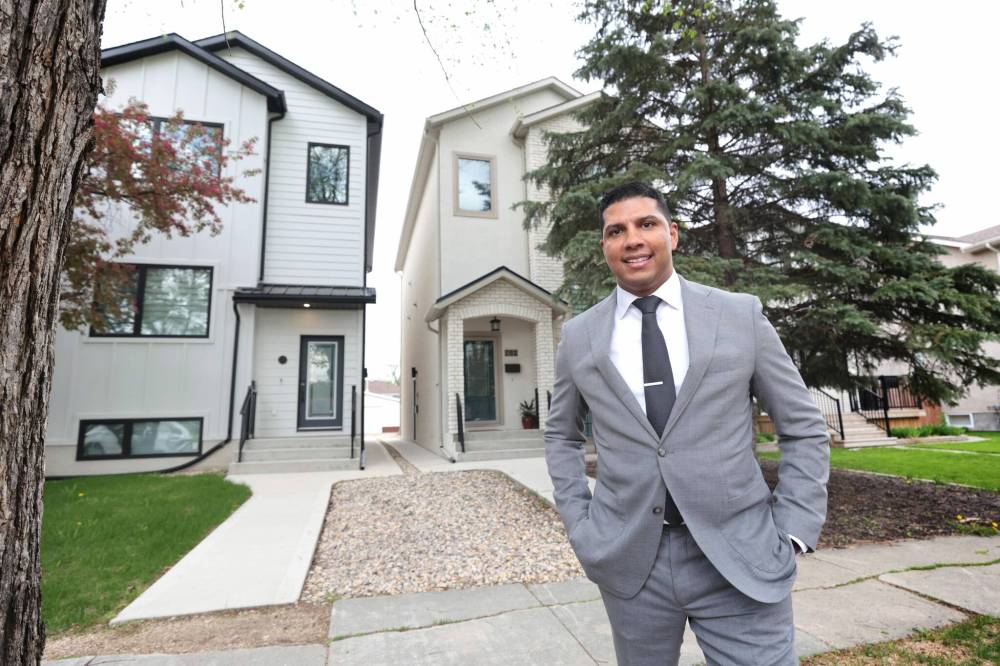
Paragon Design Build president and co-founder Nigel Furgus has been in the housing industry for 15 years, and he’s seen the trend gain momentum due to the affordability crisis.
Paragon is currently building apartment blocks designed for larger families — with three- and four-bedroom suites.
The company has also fielded requests to add secondary suites to single-family residential homes.
“That really took off,” Furgus says. “Having secondary suites in existing homes reduces the economic strain. We’re finding that large families — a husband and wife with child or children — have a parent living with them to reduce the burden of the rent.”
The trend has also caught the attention of the federal government, which has introduced relief through tax credits.
There are two that apply, says Jack Waterman, a principal at Grant Thornton LLP, an accounting and tax specialist firm.
The first is the multigenerational home renovation tax credit. Families can receive up to $50,000, or 15 per cent of anticipated costs, to create a secondary suite within their homes. They have to show the renovation is for a family member — whether returning adult children or aging parents.
Another option — one that’s flying “kind of under the radar,” in Waterman’s opinion — is the home accessibility tax credit.
The non-refundable credit covers renovations to make homes more accessible. There’s a $20,000-expense limit, which means applicants can receive a tax credit of up to $3,000 (or 15 per cent).
People living in multigenerational settings may be eligible for both credits, Waterman says.
According to the City of Winnipeg, 791 permitted secondary suites have been constructed for multigenerational housing and for rentals since 2019. Sixty had been built this year, as of mid-May.
David and Janet Rheault redesigned their two-storey family home in River Park South when David’s mother, Jeannette, 88, came to live with them three years ago.
They converted two upstairs bedrooms into a single-living suite, renovated the upstairs bathroom to accommodate Jeannette’s changing needs and installed a chairlift on the stairs.
To ease her transition, the space has many of the comforts she was used to in her former home in the southern Manitoba town of Somerset.
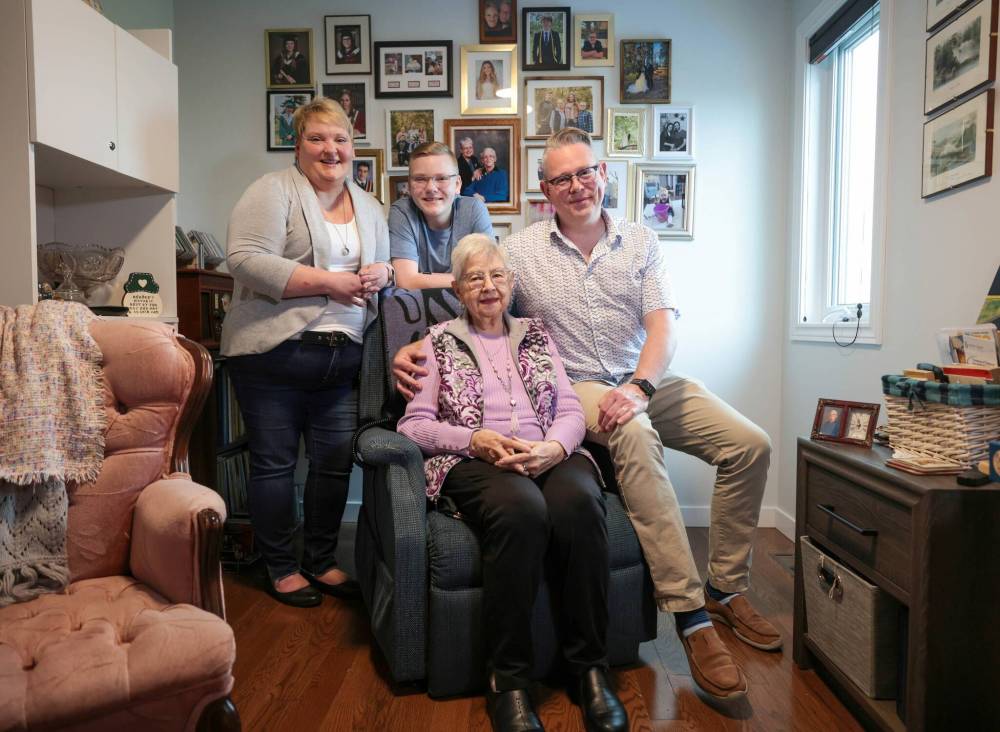
Both David and Janet Rheault grew up in multigenerational environments and are comfortable with communal living.
“It wasn’t at all a stretch for us,” Janet, 51, says. “David’s grandmother helped raise him when his mother Jeannette was working full-time, and my great-grandmother lived with her grandparents.”
Until last year there were six people living in the Rheault home, but their daughter moved out when she got married. The couple’s two sons still live with them.
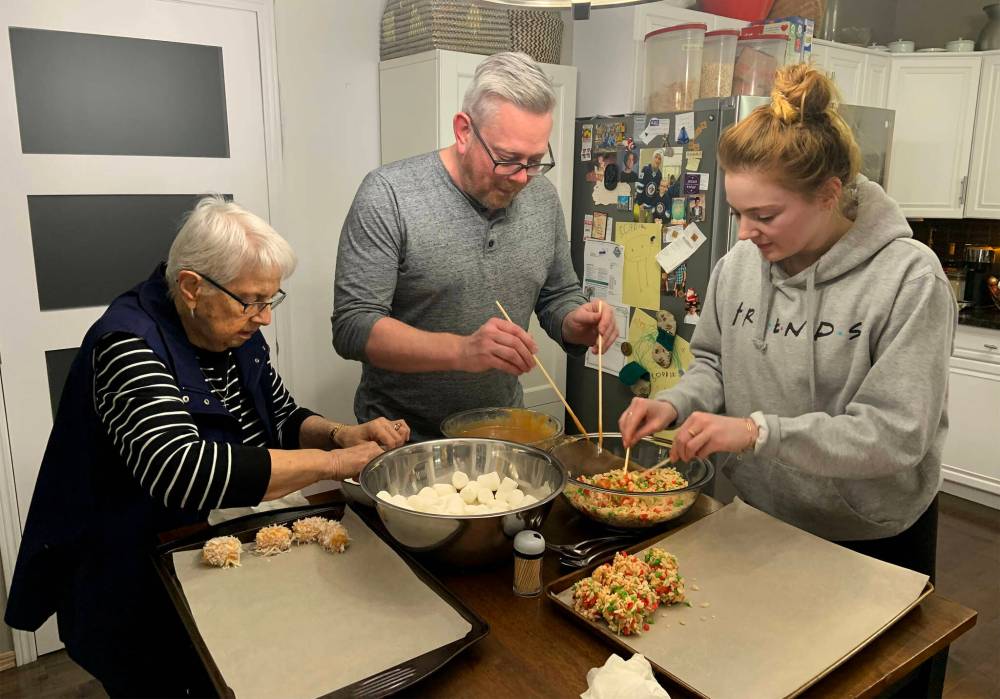
“Our three children were all very supportive with the idea of their ‘Mémère’ coming to live with them,” Janet says. “Our happiness hasn’t diminished by having a parent living here. This is still our home and she is a part of our home. That may not be everybody’s experience, but for us Jeannette fits in very well in our lives.”
As with the Brown family, the Rheaults say communication is key to making the arrangement work. They invest in time alone, while also making sure they have time with their children.
Jeannette’s other children and grandchildren visit often. Recently her great-granddaughters came around to play cards.
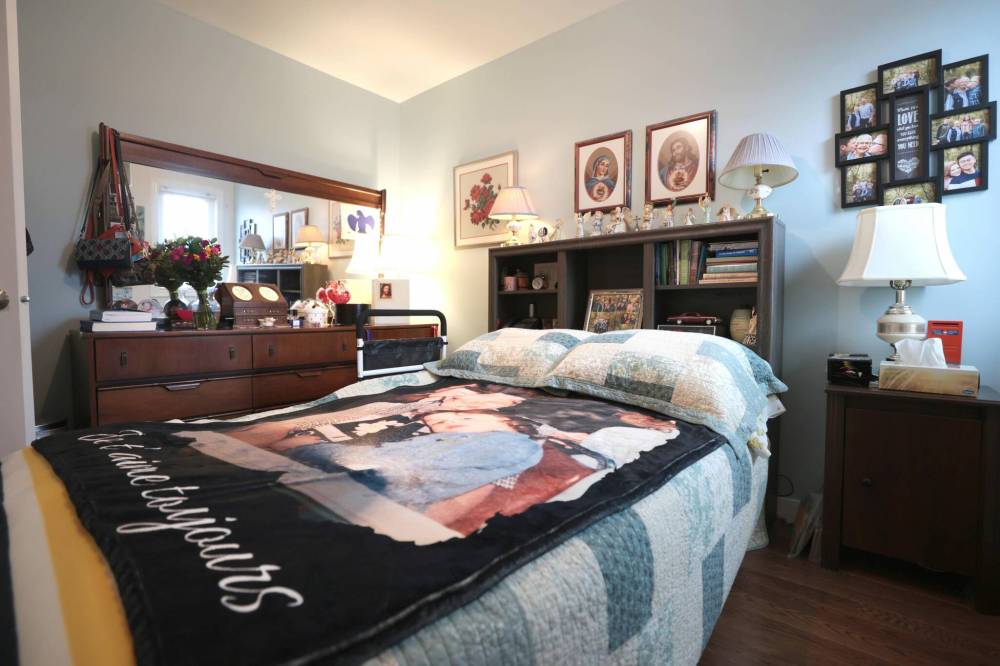
“Jeannette has been playing cribbage all her life and taught every one of her grandchildren how to play, as well,” Janet says. “The girls are too young to play crib, so we played Go Fish, and she really enjoyed that. It was such a simple game but it brought her so much joy in the moment, to pass along that love of playing.”
The key to their arrangement is flexibility, the Rheaults say. Some days are easier than others, but by taking things one day at a time, they are able to navigate Jeanette’s changing needs.
“We understand that if Mom’s needs change then we may need to reassess this current situation. We will always put her needs first,” says David, 53.
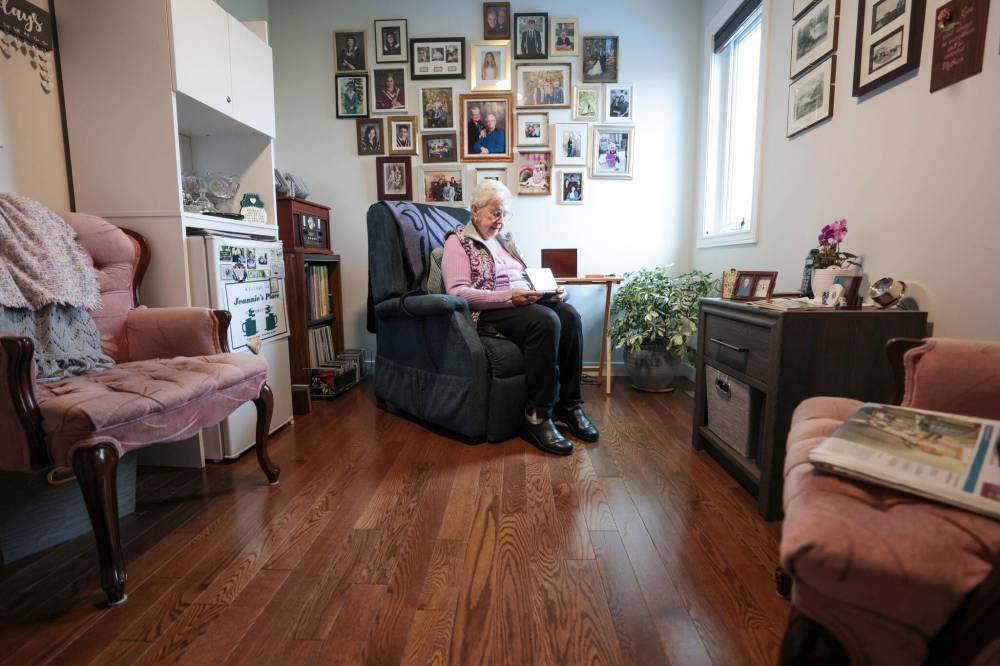
The family has in-home support from Jeannette’s care team.
“Our care team is the best; (they) play a vital role in Jeanette’s care and their support to our family is immeasurable,” Janet says.
Ultimately, the family wants Jeannette to be safe, happy and secure.
“There is a measure of role reversal with how things are,” David says. “We are doing what we feel we need to do and can do, and we are showing an example to our children of what it means to love.”
Multigenerational living dates back to time immemorial in Indigenous cultures.
And when European settlers first arrived in North America, it was still common for generations to live under one roof — most often in farming settings — with homes passing down from one generation to another.
It was only in the 1950s that single family homes became more attainable with the introduction of the Canada Mortgage and Housing Corporation’s insurance model, which coincides with the emergence of the archetypal nuclear family unit in North America.
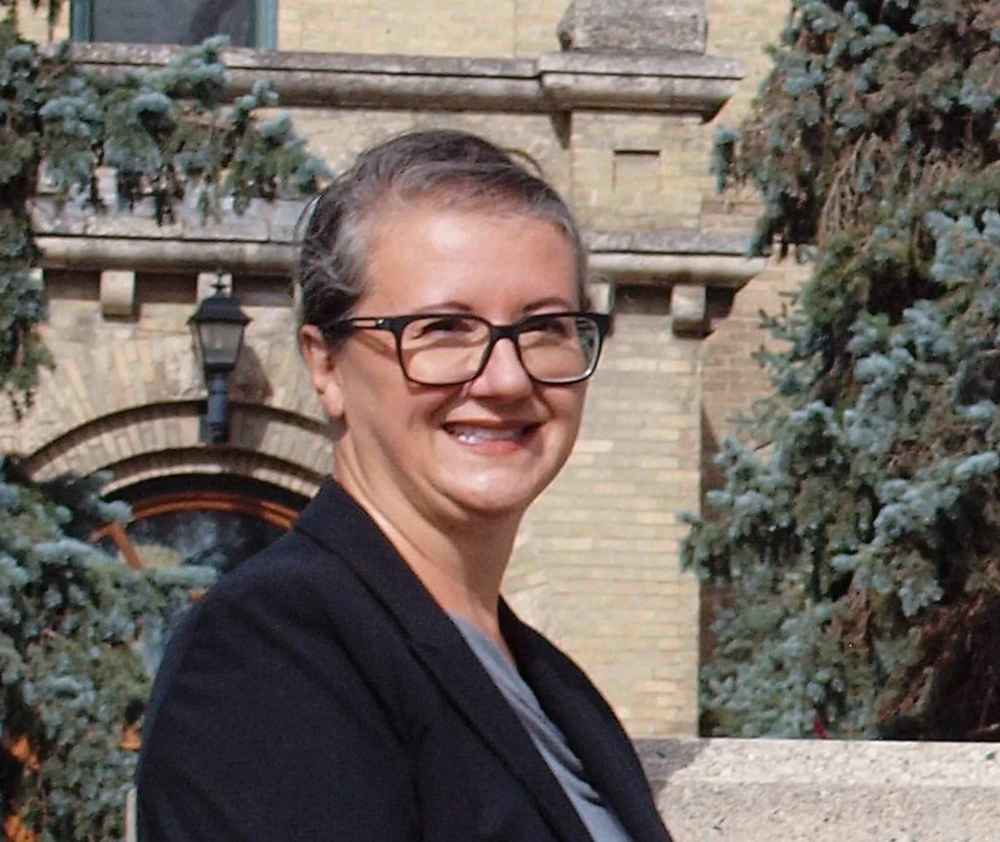
“This golden yardstick, this trope of this normative nuclear family that everyone should ascribe to, was a fiction,” says Serena Petrella, associate professor in sociology and gender and women’s studies, and chair of the sociology department at Brandon University.
“The expectation that we should all have this one kind of family to have happiness has made many of us very miserable.”
But newer generations are resisting the nuclear-family norm, she says.
The shift occurring among millennials and gen Z, coupled with the financial challenges of buying a home and having families, has resulted in a return to a living style and relationships that are more fluid.
That includes Premier Wab Kinew, whose mother lives with his family.

“My mom… is a huge and wonderful part of our lives,” Kinew said in a CBC interview in May. “We are very lucky to live in effectively a multigenerational household, which not only means that not only do I get to see my mom all the time, but that she also is super active with our kids and with my wife Lisa (Monkman) and our whole household.”
While the multigenerational trend may be experiencing a revival in North America, it never really went away in some cultures.
In ethnically diverse Canada, immigrants — especially first and second generations — still value a single household for young and old, where responsibilities are shared.
Multigenerational housing was normal in Thamu Eh’s childhood.
Eh lived in a refugee camp in Thailand for 10 years with her parents and grandparents, who were originally from Burma (now Myanmar).
Even after the Canadian government sponsored Eh and her family, they continued multigenerational living. At one point, beginning in 2010, Eh was sharing Winnipeg quarters with nine people, including her uncles.
Fourteen years later, she’s still living with family — now joined by her husband, Nealon Almario, and their two children, Willow, 2, and eight-month-old Meadow.
“It’s a full house,” says Eh, 26.
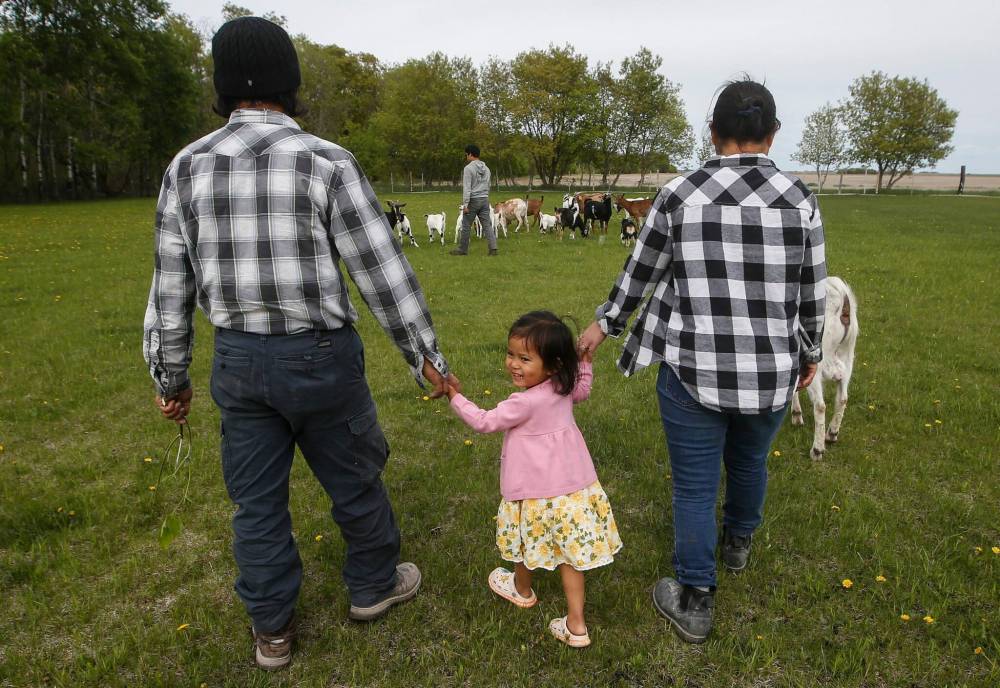
Her younger brother and older sister also live on the family property north of Stonewall, which had to be renovated to accommodate everyone.
So do goats, chickens, quail, guinea fowl and farm cats.
Her children are being raised by “a village,” Eh says.
She’s the only one among her western friend group to live in a multigenerational setting, but says it feels natural and closer to the family’s Asian roots.
“When I talk about it to friends, they’re kind of like, ‘Oh, why don’t you want to move out?’ They’re trying to encourage me to move out,” Eh says.
“But… it’s my choice. It’s not like we can’t find a place or anything like that. It’s more like it’s helping us mentally, emotionally.”
Social connection and child care are ingrained in the household. Eh can sleep in on Sundays when her toddler goes to church with Grandma. If Eh needs to grab a shower, someone watches the children.
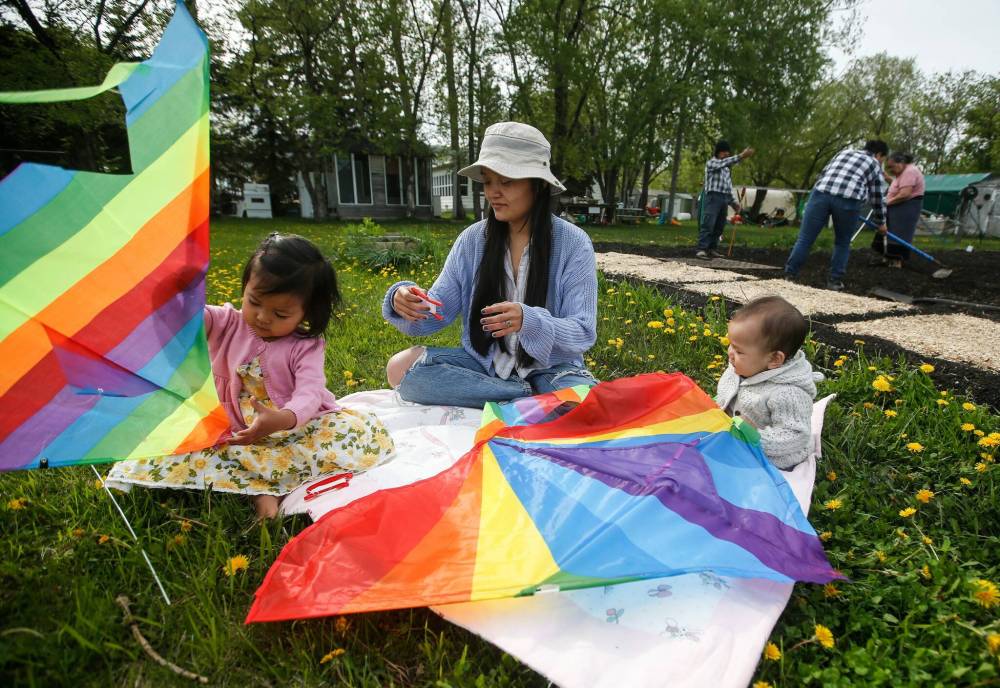
Family members collaborate on farm chores — Willow loves collecting eggs — and contribute to purchases, from groceries to appliances.
Still, the young couple plans to move out on their own eventually, though she’s in no rush.
Eh says the conversation about living with her parents was a hard one, and her husband took some convincing.
For now, she wants to stay on the rural land until her children are a bit older. But she wonders how long her family will remain nuclear if they leave. Her Filipino husband’s parents are aging, too, and it’s part of Filipino culture for children to care for their older parents.
“I’m pretty sure eventually, if we get our own place, they’re going to move in with us, too,” she says with a laugh.
“My husband has lived with us for many years. I think it’s only fair if I let my in-laws live with us.”
Multigenerational living is not for everyone.
Power struggles can arise from different parenting styles, and simmering childhood resentments can resurface once an aging parent or child returns to the family home.
Tensions can also arise if older parents are forced to postpone plans to retire, downsize and travel when their children and grandchildren move in with them.
Plus, there’s gender disparity at play when women end up with more responsibilities on their already full plates.
“If there is an elderly parent that needs to be cared for, it usually falls to the woman of the family, again,” cautions Brandon University’s Serena Petrella.
It’s not a decision to be taken lightly.
For aging parents, the physiological and psychological benefits of living with family can play a big role in combatting loneliness
But there appear to be more advantages than disadvantages, especially when it comes to spreading out costs for groceries, bills and major purchases. The presence of an older generation may also negate the need for expensive child care.
For aging parents, the physiological and psychological benefits of living with family can play a big role in combatting loneliness.
“There are a lot of theoretical benefits of living this way because the more family you have around you, the more you are connected,” says University of Manitoba Prof. Philip St. John, who specializes in geriatric medicine.
But it’s a multifaceted issue that includes people’s values and wishes, their risk tolerance and the ability of the family and health-care system to provide supports at home, he points out.
“There are surprisingly few studies on multigenerational family living. You think there would be more, given how important it is to society,” St. John says.
“It’s not well researched, so no one knows why it would be good or potentially bad.”
The fundamental goal is for people to live at home as long as possible, says Dr. Shawn Thomas, interim associate chief medical officer with Winnipeg Regional Health Authority.
Changing the environment of an aged parent, who is physically and mentally vulnerable through no fault of their own, can cause significant problems and challenges.
“We have advocated strongly in the region for home-first… community-first, we don’t feel it’s in people’s best interest to stay in hospital long-term and then go into an institution. The goal is home, first and foremost, and the more support there is, the better,” he says.
In increasingly fragmented western societies, is it possible to reimagine the way we live to alleviate loneliness and disconnection? Does the need for community and intimacy trump the desire for privacy and autonomy?
A shift is already taking place.
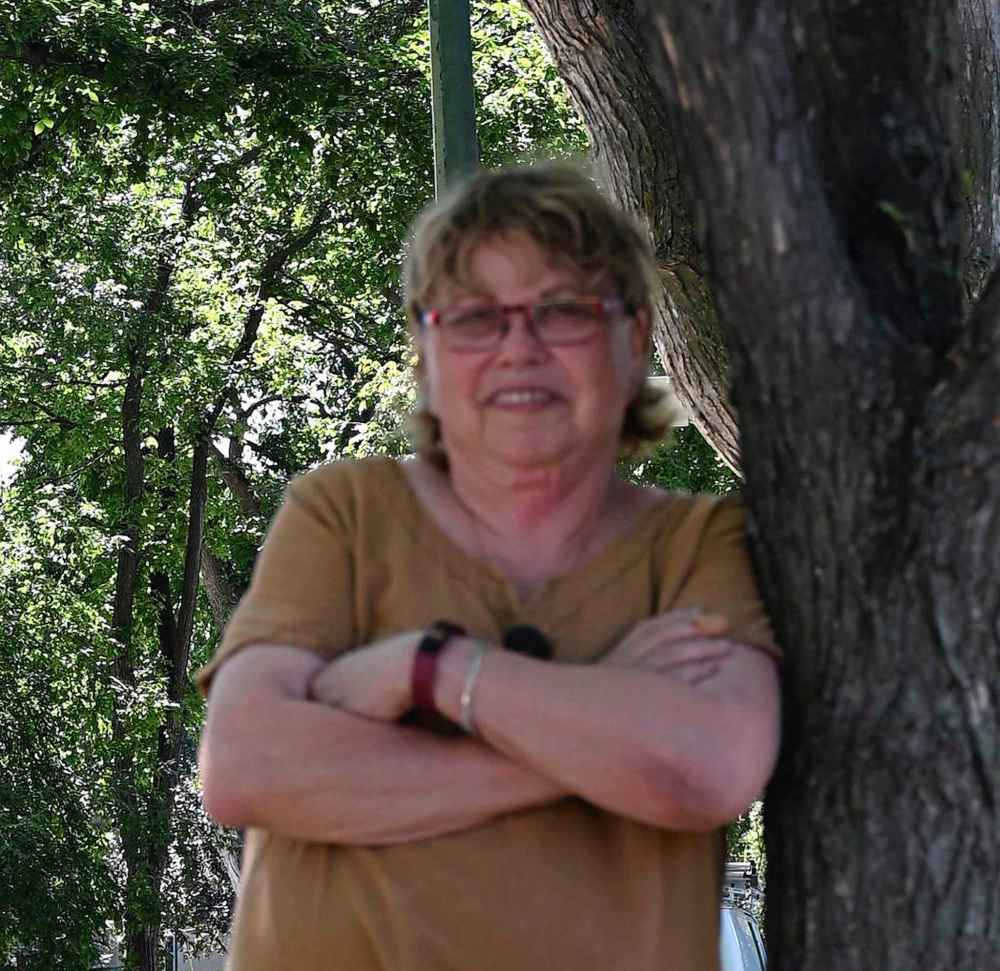
In Winnipeg, Beverly Suek established the Women’s Housing Initiative Manitoba in 2018 for older women who don’t want to live alone. There are currently six women, all aged 55 and older, residing in her large Riverview neighbourhood home.
Further afield, The Village in San Francisco offers unique multigenerational co-living to 18 children and adults, ranging in age from two up to the early 40s, in a three-storey house with shared spaces throughout.
“The housing crisis is driving a lot of this in the North American context,” says Distastio, the urban affairs expert.
“We will see more condos and life leases and co-operatives — all kinds of housing things — because the economy is changing in a manner that we are not accustomed to. It might be a countering to the commodification of the housing markets.
“And Winnipeg, for the first time in more than 100 years, is changing. In the last 15 years, our population has been completely remade through international immigration.
“We are in for some interesting times for the housing market.”
av.kitching@freepress.mb.ca and gabrielle.piche@freepress.mb.ca


Gabrielle Piché
Reporter
Gabby is a big fan of people, writing and learning. She graduated from Red River College’s Creative Communications program in the spring of 2020.
Our newsroom depends on a growing audience of readers to power our journalism. If you are not a paid reader, please consider becoming a subscriber.
Our newsroom depends on its audience of readers to power our journalism. Thank you for your support.